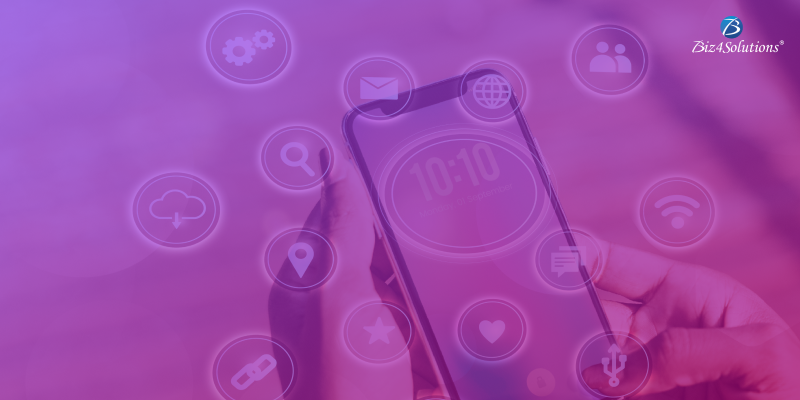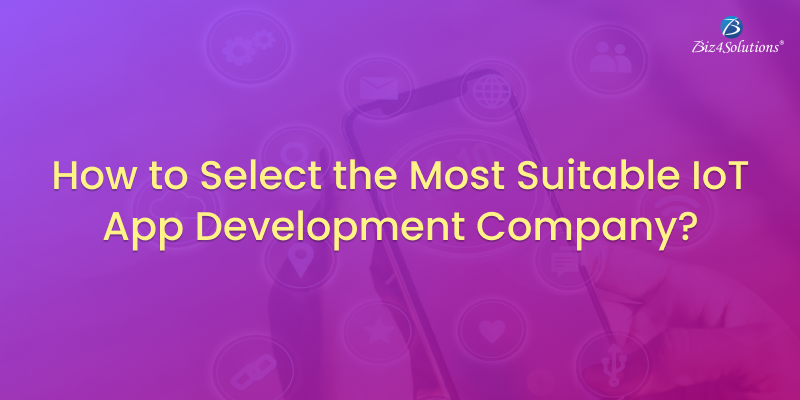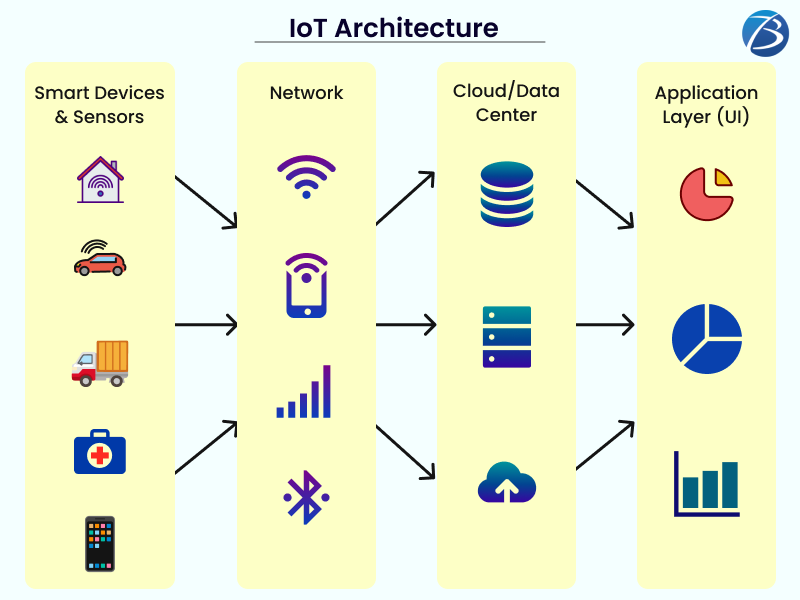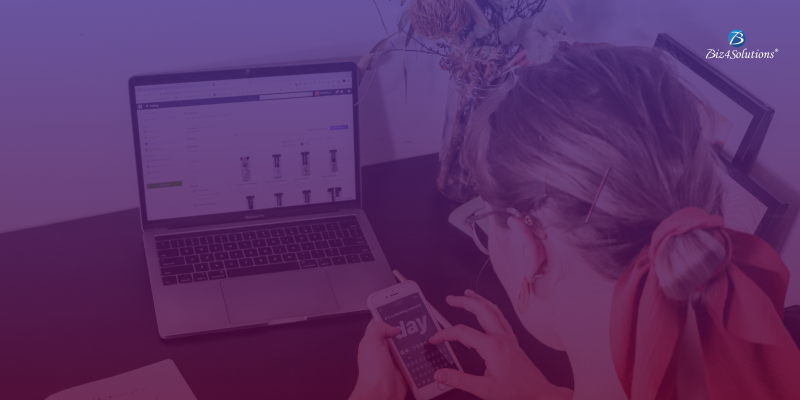Actionable Tips to Select the Best IoT App Development Company!


IoT has evolved from an innovative concept to an essential component across diverse industrial domains like healthcare, transportation, etc. IoT adoption is growing in leaps and bounds and this trend is here to stay. IoT app solutions have become an integral part of modern-day business infrastructures and operations. The popularity of IoT-based smart home devices is also on the rise. Moreover, IoT is being integrated with other emerging technologies like Artificial Intelligence and Blockchain to optimize productivity and deliver unthinkable outcomes. As such, several entrepreneurs are investing in IoT app development.
However, IoT app development is not easy and its correct implementation requires professional expertise. That’s the reason investors and entrepreneurs are hiring professional assistance for executing IoT-based projects. Here as well, one needs to choose their IoT app development partner wisely to obtain the best results. This post provides guides you through selecting the right IoT app development company that best suits your project objectives. The post will help you understand what to look for in an IoT app development service based on your use case and the standard protocols and best practices needed for IoT app development.
Before we dive deeper, let’s take a quick look at how the IoT app ecosystem works.
Functioning Principle of IoT Applications
This is how an IoT apps functions:
Perception Layer: Connected Objects & Devices:
This layer comprises wireless sensors and connected devices like actuators that collect the relevant data by interacting with the environment. This data is finally transmitted to a centralized hub like a Cloud platform.
Here’s how IoT data collection takes place. Sensors monitor processes or environmental conditions, while actuators control them. Sensors can capture data related to the chemical composition of certain objects, conditions like the humidity & temperature of certain environments, an assembly line’s speed, a tank’s fluid level, a pipe’s water flow, movement of objects in a particular environment, etc. Actuators, perform real-time remedial tasks based on the conditions detected by sensors. These tasks include automatically switching off lights when the sun rises, turning off valves when the water level reaches the pre-defined mark, adjustments in the rate of flow of a liquid, controlling the movements of an industrial robot, etc.
Network Layer: Data Acquisition
In this layer, the data collected by IoT devices and sensors is compiled, converted to digital formats, and then routed over the network via internet gateways.
This is how the process works. Raw data gathered by sensors in the analog format are converted into a digital format to make the data ready for processing. A Data Acquisition System (DAS) aggregates data and formats it. The data is then sent to an internet gateway for further processing. Wireless or wired systems like cellular systems, WiFi, Ethernet, Bluetooth, NFC (Near Field Communication), etc. are used for this purpose.
Edge IT Systems: Pre-processing
The size of the data at this stage is huge. This is because data collected by several sensors simultaneously get consolidated in one place. This humongous data needs to be reduced before sending it to the Cloud or data center. Here, Edge IT systems come into the picture; data get pre-processed through analysis. Edge IT Systems employ ML algorithms for obtaining insights and visual technologies for presenting the data in an understandable format.
Data Storage: Cloud & Data Centers
The data gathered by multiple sources is stored & processed further in Cloud-based platforms like Microsoft Azure, AWS (Amazon Web Services), GCP (Google Cloud Platform), etc. for generating comprehensive insights. The data is visualized, thoroughly analyzed, managed, and stored securely in data centers.
Application Layer (UI):
This layer is the user interaction layer and delivers app-specific services to the end user. A backend system like the database or message queue handles the data. This data is visualized and interacted with through the UI of a mobile or web app.

Roadmap to follow while picking IoT App Development Services

Check Portfolio and References
Before entrusting your project to an IoT application development company, you must understand how the enterprise operates and what outcomes can you expect from them. Also, you need to verify whether the firm has ample experience and expertise in IoT development, particularly in the specific category that your IoT project falls under. Therefore, it’s important to review the company’s portfolio and references from previous clients to determine their track record in IoT app development. A bit of research to find out the IoT app development company’s industry-specific certifications, the awards & honors received, etc. will prove beneficial. You can check out the firm’s website, and portfolio in business listing sites, blogs, case studies, etc. for checking on their IoT development capability.
A Dynamic & Competent Team
The IoT app development agency you shortlist for your project should offer a dynamic team of skilled & experienced professionals abreast with the latest IoT technologies and industry-specific market trends. The team should work collectively to deliver high-quality product development outcomes and strictly adhere to project delivery deadlines. The team members should possess sound problem-solving skills so that they can resolve any logistical or technical issue arising during the IoT app development process. Furthermore, the team should be able to communicate with you continually and keep you updated about the project whereabouts.
An ideal IoT application development team consists of the following resources. A project manager, a business analyst, frontend & backend IoT app developers, UI/UX designers, wireless communication experts, automation & system integration engineers, and security experts. If your IoT app development solution is large-scale and complex, having a data scientist within the team will be an additional advantage.
Flexibility & Approachability
Your IoT app development partner should be open to accommodate changes in the project’s scope or requirements whenever needed. The team should be responsive to any queries or concerns put forth by the client and be able to promptly address the same.
Infrastructure & Scalability Requirements
IoT app solutions handle huge chunks of data. Therefore, you need to check whether the IoT application development agency you are planning to partner with is capable of handling humongous data and scaling it based on the need.
Moreover, the company should have an IoT-friendly infrastructure and use the standard IoT tech stacks. The agency should be able to establish and handle the identity and integrity of the devices in the IoT ecosystem. Also, there should be privacy and security protocols to protect the devices and data right from the software developmental stage to the consumption phase including data security. Your technology partner must strictly adhere to all compliance requirements based on the use case.
IoT-Specific Skillsets
IoT devices need to be connected to the internet and mostly depend upon low-power networks like LoRaWAN, Zigbee, etc. So, IoT app developers should be well-versed in creating low-power designs and optimizing a device or app for power consumption. They should have knowledge about networking protocols and technologies like Bluetooth, WiFi, IP/TCP, etc. Familiarity with Cloud computing services and platforms is also desirable.
IoT Developers need extensive knowledge about the tools for data visualization and data analytics so that they can effectively process and analyze the data obtained from IoT devices and present it in a meaningful way. Developers should know how to handle the communication taking place between IoT devices, gateways, and cloud services. They should be well versed in programming languages like Java, JavaScript, Python, C, C++, etc., and familiar with IoT platforms like Azure IoT, AWS IoT, and Google IoT. Other IoT developer skillsets include expertise in working with embedded OSs like FreeRTOS & Linux, and microcontrollers; IoT protocols like CoAP, HTTP, and MQTT; data management tools and databases like NoSQL, SQL, & Apache Kafka.
The effective functioning of an IoT app ecosystem involves sound coordination between hardware and software components. The hardware components are the sensors and devices used for obtaining data while the software components are algorithms and software programs used for data processing & analysis. So, the IoT app development company you select must have proficiency in software as well as hardware development so that they can design and implement IoT solutions effortlessly. Also, developers need to know the standard methodologies of how to interface with the connected devices present in the IoT network like actuators & sensors.
Adherence to Robust Security Practices
IoT devices involve the collection and transmission of sensitive data. So, they need to adopt robust security measures to protect the data and the communication information that is being exchanged between IoT devices and the Cloud platform. As such, IoT Application Development services must have knowledge of third-party security tools. They should also be well versed in the IoT security best practices and be able to implement them effectively.
Take a look at some of the IoT security best practices. Recommended practices for data & device security include authentication, encryption, secured firmware updating mechanisms, access controls, the secure boot technique, and secure communication protocols, like MQQT & HTTPS, etc. Practices like regular monitoring and logging of the device’s activity are helpful in detecting and addressing security breaches. Also, the IoT development service must have a disaster recovery plan ready to tackle the worst security breach scenarios.
Post-launch Support and maintenance
The IoT technology is ever-evolving and so, IoT software development solutions need to be updated periodically to stay relevant as per the latest trends. Moreover, the IoT app architecture is quite complex and prone to security threats. Hence, IoT solutions might come across bugs or functional issues at the initial stages just after the app goes live. And, needless to say, such issues need to be resolved timely so that your end-user’s app experience doesn’t get affected and your brand’s reputation stays intact.
Also, IoT devices & apps are soft targets for hackers and need continuous monitoring to identify security vulnerabilities. There must be a workable plan to handle data breaches and security lapses. These are the reasons why post-launch support and maintenance is a crucial pre-requisite to look for while you are selecting an IoT application development company.
Are You Interested in Building a Top-Class Website or Mobile App?
Final Thoughts:
IoT development is a complex process and comes with loads of demanding requirements. So, selecting the right IoT app development company for your upcoming project is necessary to avoid any unwanted surprises and rework down the line.
I hope this post has provided you with clear insights on the prerequisites to entirely design, develop, test, deploy, and maintain an IoT solution. The IoT development service selection strategies mentioned in the post will help you to choose the right technology partner for your upcoming IoT project.



